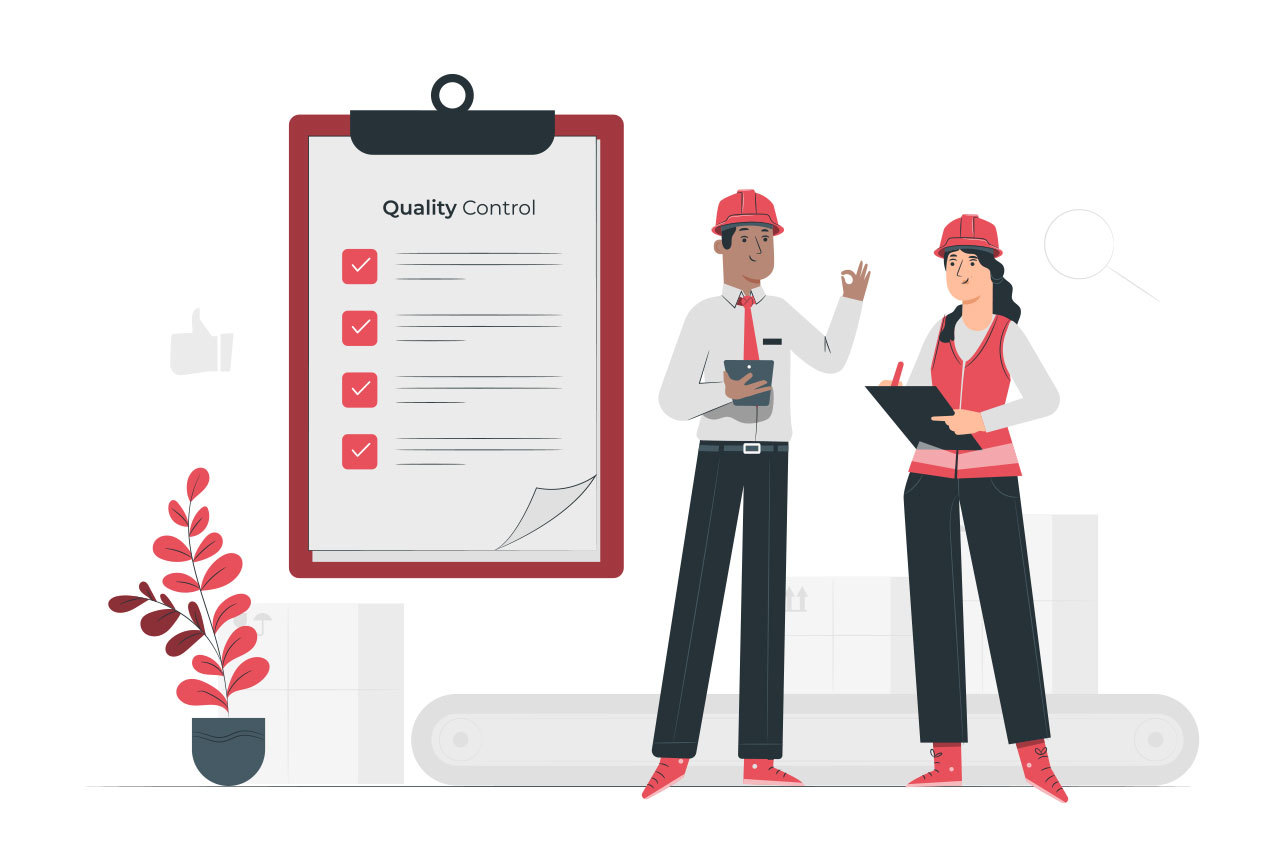Effective coordination of business process management initiatives is critical to how fast and seamlessly you can begin to streamline operations and reduce costs.
When implemented correctly, BPM can improve productivity by up to 50% (Forrester).
So, before implementing BPM, It’s crucial to understand what works and what doesn’t if you’d like to start seeing the desired results in no time.
In our combined 15+ years of helping businesses scale and improve their processes, we’ve picked up some very crucial best practices for BPM implementation success.
This blog discusses ten of these techniques. Let’s dive in!
1. Create Idealistic Goals

Setting ambitious but achievable goals for your business process management initiatives is crucial, as well-defined goals guide your efforts toward your desired outcomes. It ultimately makes it easy to track your progress and evaluate whether the intended outcomes are being realized.
However, while ambitious goals encourage growth and innovation, they must be feasible. Setting unattainable objectives can lead to disappointment and hinder progress. For instance, purchasing a BPM tool to spool reports on specific processes is feasible, but expecting the tool to provide strategic planning involving complex decision making is unrealistic.
You must strike a balance between the desire for significant change and the practicality of implementation.
2. BPM Should Focus on Performance

Your business process management initiatives should focus on improving performance as it creates a clear direction for your team and highlights your goals. It also helps to integrate your overall objectives into daily business operations.
Use performance metrics to communicate your strategy and priorities, rather than relying solely on your intentions, to stay aligned with your goals.
For instance, if you’ve had challenges addressing customer queries promptly, you can implement a CRM automation tool that reduces response time and streamlines your customer support process. This performance-oriented approach guides your process optimization strategies and ensures that your BPM efforts yield measurable results that positively impact your organization’s success.
3. Consider Stakeholders When Implementing BPM

Your employees or team members have a significant impact on how well your business processes run. Involving them during the transition period is critical to a successful BPM implementation.
It’s important to consider their concerns and challenges with the current process, so you can create new processes that align with their needs. Seek their ideas, feedback, and suggestions and encourage open communication.
When employees know their efforts are valued, they are more likely to participate actively. Their involvement makes the process smoother and more successful.
Introducing new tools into your processes will, by default, trigger concerns among employees, as they may perceive these changes as potential threats to their jobs. However, proper communication can alleviate such concerns and showcase how the new tools enhance their work and effectiveness.
4. Optimize High-Value Processes First

When considering the processes that need to improve, begin by identifying those that impact your organization, team, or customers the most – i.e., your core processes.
If you have a lot of impactful core processes but still want to narrow them down further, identify which are most critical to your goals. For instance, if your goal is to reduce cost, consider processes that consume the most resources.
By segmenting your processes based on their value, you’ll have a clearer picture of what comes first, what comes next, and what comes after.
5. Compare Multiple BPM Tools

The suitability of a BPM tool directly impacts how well it can streamline your processes and drive efficiency. It is important to choose a tool that matches the current needs of your business and is flexible enough to accommodate your future changes and requirements.
A suitable BPM tool should allow customization and cater to your in-house workflows and processes. Avoid rigid tools that force you to alter your operations to fit their structure. The tool’s interface should also be intuitive and user-friendly. A complex interface can lead to user resistance and hinder adoption.
If you have an existing tech stack, check if the BPM tool can seamlessly integrate with them. Smooth integration ensures a cohesive workflow without disruptions.
Lastly, evaluate the cost of the BPM tool, including initial setup fees, licensing, maintenance, and potential scalability costs. Ensure it fits within your budget without compromising on essential features.
6. Seek Expert Help

Implementing business process management can be a complex journey, often involving intricate processes, advanced technologies, and a profound understanding of your industry’s unique dynamics.
As such, hiring a business process consultant from the beginning is vital. They bring a wealth of knowledge and experience to BPM projects across diverse industries.
A business process consultant will help you evaluate your current processes and provide an unbiased perspective on the issues that may not be apparent to your internal team. They will develop a roadmap tailored to your organization and guide you through the entire process.
Schedule a free consultation with one of our expert BPM consultants to see if we are a good fit.
7. Implement the New Changes in Stages

It’s natural to desire rapid results, but effective business process management takes time. A hurried approach can lead to critical oversights and execution errors.
So, allow sufficient time for planning and execution as this ensures a seamless process change and pays off in the long run. Think of your BPM journey as a puzzle, with each piece representing a process change. Placing the pieces carefully ensures the final picture aligns with your goals.
It’s also vital to allow adequate time for employees to familiarize themselves with the new tools and processes. As they adjust at a manageable pace, you’ll allow them to adapt and be more confident with the new system.
8. Test the New Process

Prior to rolling out a new BPM tool and process across the board, a crucial step in any business process management journey is comprehensive testing. You need to test your new processes, workflows, and sequences to identify potential glitches and refine the process for optimal results.
Anticipate all possible scenarios and outcomes and understand the pathway your process could take. This approach allows you to rectify potential issues before they become full-blown problems.
Additionally, testing isn’t just about identifying problems. By subjecting your newly designed workflows to simulated scenarios, you can fine-tune each step to ensure they align with your overarching goals.
9. Document Each Process

Every step in the BPM implementation journey gives you data, including insider insights, stakeholder values, and results from tools’ testing. Create SOPs, and document all processes, changes, and improvements to maintain a clear record and ensure consistency in future operations. It will serve as a valuable reference for your team and aid in troubleshooting, compliance, and strategic planning.
Well-documented processes also facilitate healthy communication across teams and help new members quickly grasp the workflow. This practice fosters transparency and continuous improvement.
10. View BPM as a Continuous Journey

Recognize process changes are not one-time events but ongoing journeys. Continuously monitor, evaluate, and refine your processes for sustained success and to meet evolving business demands.
Assess the effectiveness of implemented changes from time to time and gather feedback from stakeholders. This iterative approach allows you to identify emerging challenges, seize new opportunities, and align your processes with shifting goals.
Final Thoughts
Business process management methodologies can help optimize operations, cut costs, and enhance efficiency. However, one wrong approach can jeopardize the entire initiative.
Set clear goals, involve stakeholders, segment processes, choose the right BPM tools, and allocate ample time for implementation and testing. More importantly, seek expert help to guide you through the intricacies. Book a free call with one of our expert business process consultants to get started.


